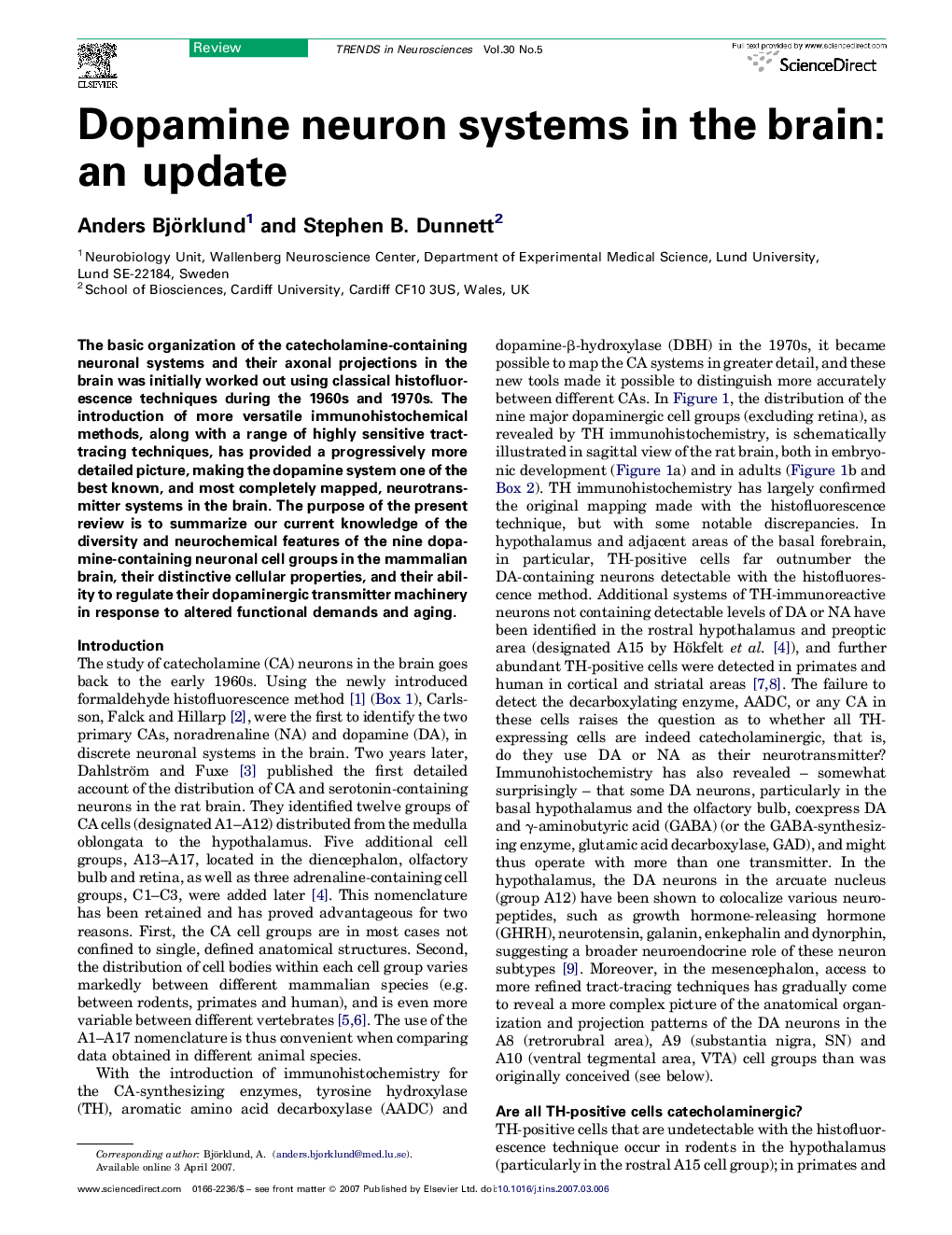| Article ID | Journal | Published Year | Pages | File Type |
|---|---|---|---|---|
| 4354991 | Trends in Neurosciences | 2007 | 9 Pages |
The basic organization of the catecholamine-containing neuronal systems and their axonal projections in the brain was initially worked out using classical histofluorescence techniques during the 1960s and 1970s. The introduction of more versatile immunohistochemical methods, along with a range of highly sensitive tract-tracing techniques, has provided a progressively more detailed picture, making the dopamine system one of the best known, and most completely mapped, neurotransmitter systems in the brain. The purpose of the present review is to summarize our current knowledge of the diversity and neurochemical features of the nine dopamine-containing neuronal cell groups in the mammalian brain, their distinctive cellular properties, and their ability to regulate their dopaminergic transmitter machinery in response to altered functional demands and aging.
